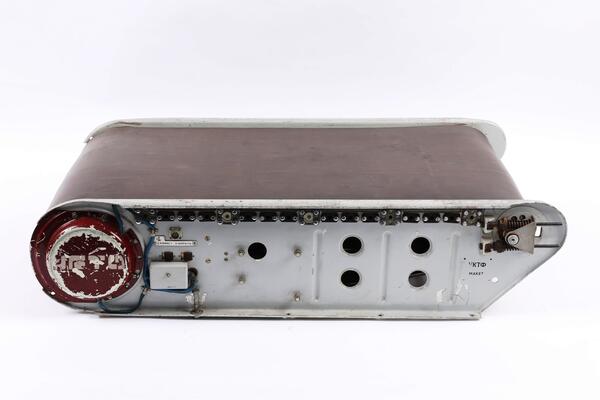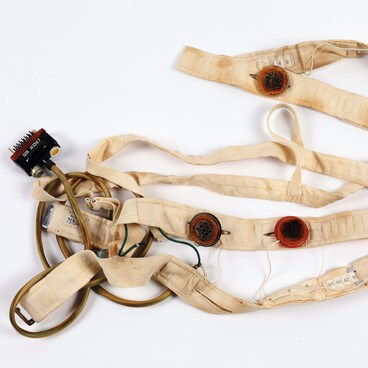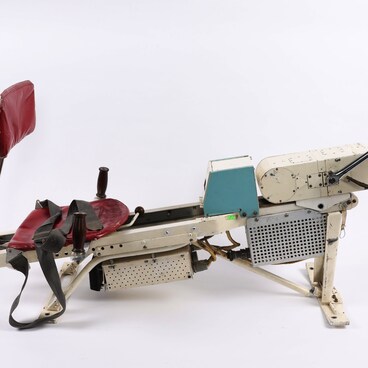The most dangerous factor in space exploration is weightlessness. If it is not subject to the Earth’s gravitational field for extended periods then the human body can undergo various changes, including the wasting and weakening of muscles. This particularly applies to the legs, which cosmonauts use less when they are in orbit than they do on the Earth’s surface. It has been found that many cosmonauts suffer a loss of muscle mass in their legs — up to 25%.
Running treadmill
Время создания
1970s-1980s
Размер
20,5x86x44 cm
20.5 х 86 х 44 cm
20.5 х 86 х 44 cm
Техника
Machine made items
Коллекция
Выставка
#1
Running treadmill
#4
#5
There are various ways and instruments which can help prevent this muscle wasting on board space stations. One resistance-based approach is to wear a special Pingvin (‘Penguin’) exercise suit. Another, active technology is the use of gym equipment such as weights machines, exercise bikes of the type used for cardiac stress tests, and treadmills.
#6
The treadmill is a compact conveyer belt, similar to a short travelator. The electric motor is fitted with reduction gears that can change the speed of the belt from a minimum of 5 to a maximum of 13 km/hour. To use the treadmill the cosmonauts wear a training loading suit (TLS), which is a waistcoat with hanging shock absorbers which can be fastened to the treadmill. This system fixes the cosmonaut firmly to the treadmill, imitating the effect of the Earth’s gravity. The shock absorbers distribute the artificial “gravity” so that 30% of the force is applied to the upper part of the body.
#7
The treadmill has two settings - active and passive. In the active setting, the motor dives the treadmill belt at the selected speed. In the passive setting, which is physically more demanding, the cosmonaut moves the belt with their legs, while pulling on the side springs with their arms. Frequently cosmonauts adapt the device in various ways, which adds some variety to this repetitive form of exercise. For example, Victor Savinikh, during his space flight on the Salyut-6 together with Vladimir Kovalenko, designed a contraption made of elastic cords to add more resistance.
#8
Treadmills were first installed on the Salyut-1 station in 1971, but it turned out that more work was needed on the design. Their use caused vibrations in the antennae and solar batteries, and gurgling sounds in the fuel tanks, which, combined with the noise from the treadmills themselves, made it hard for the other cosmonauts to sleep. As a result, the further use of the treadmills was prohibited. By 1974, when the Salyut-3 space station was launched, these problems had been solved: the treadmills were placed closer to the station’s center of mass, and the cosmonauts were, for the first time, able to run on it without any problems. Improved treadmills were installed on the Salyut-6, Salyut-7 and Mir space stations. Since 2013 a BD-2 treadmill had been used on the International Space Station - it has a special vibration absorption system which prevents any vibration from the device being transmitted to the walls of the station.
#9
Ministry of Culture of the Russian Federation
читать дальшескрыть
00:00
00:00
1x
Running treadmill
Время создания
1970s-1980s
Размер
20,5x86x44 cm
20.5 х 86 х 44 cm
20.5 х 86 х 44 cm
Техника
Machine made items
Коллекция
Выставка
Открыть в приложении
Поделиться



